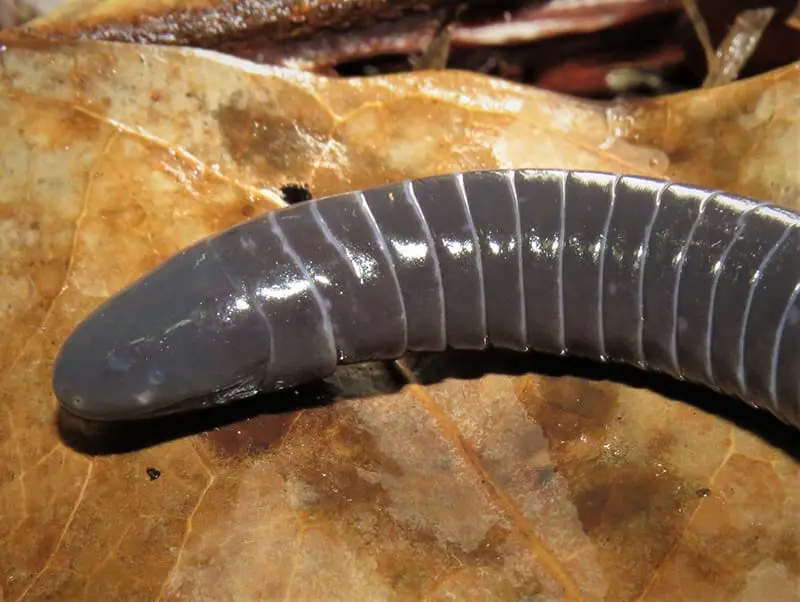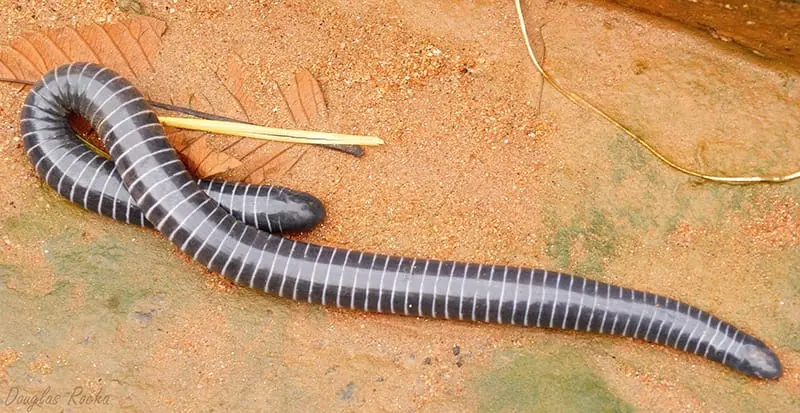Who are the caecilians?
Caecilian are vertebrate amphibians as well as frogs and salamanders . They are fossorial, which means they are adapted to burrowing and living underground - like moles. Because of this lifestyle, their eyes have undergone some adaptations, becoming smaller and covered by a thin layer of skin - making them look blind - hence their name “blind snake” and also caecilian (meaning “blind”). However, caecilians are not completely blind and can distinguish the absence and presence of light.
They are widespread in the tropical regions of several countries in South and Central America, Africa, and Southeast Asia. However, of the 6 existing families, only 3 are present in Brazil, comprising about 27 species. They are extremely diverse animals, as well as the size of each species, making the small ones resemble worms and the larger ones resemble snakes.

The caecilian of the Typholonectidae family are some of the most prominent. Unlike the other families, these caecilians are predominantly aquatic, inhabiting rivers and ponds of warm, turbid water. They are the only caecilians that have fins, and the young have external gills that disappear when they reach adulthood.
In addition, some have a toxin in their skin that can affect some fish, but the purpose of this toxin is still unknown. The largest species of this family is the Atretochoana eiselti, which as an adult can measure more than 80 cm (31 in) — being the largest known vertebrate without lungs, absorbing oxygen through the skin, as do some species of salamanders.
Siphonops annulatus can reach up to 45 cm (17 in), and have cutaneous venom glands located in the labial area, but do not have a specialized inoculation structure like snakes . On the other hand, this secretion covers the surface of the teeth during predation, suggesting that the venom glands are compressed during prolonged bites, transmitting the venom to the prey through the bite.

The skin of amphibians in general has the most varied toxins however, most studies on these secretions have focused on the Anurans order, having few on the toxicity of the skin of caecilian.In fact, caecilians are one of the least known groups of vertebrates, mainly due to their fossorial lifestyle, which makes them difficult to access.
It takes a lot of energy to collect and study a single individual, and depending on the season, 4-20 hours of manual excavation are required. As a result, scientific knowledge about these animals is very limited and generally comes from sparse reports obtained indirectly, mainly through specimens in museums and zoos.
Many more studies need to be conducted to obtain more information about the life of these animals. The increasing number of discoveries of amphibians with increasingly distinctive characteristics leads us to expect that more impressive species will be found like this.
Read more at:
A new lungless caecilian (Amphibia: Gymnophiona) from Guyana
Cobra-cega (Siphonops annulatus)
Occurrence of hemolytic activity in the skin secretion of the caecilian Siphonops paulensis
Morphological Evidence for an Oral Venom System in Caecilian Amphibians
AnphibiaWeb (Atretochoana eiselti)
